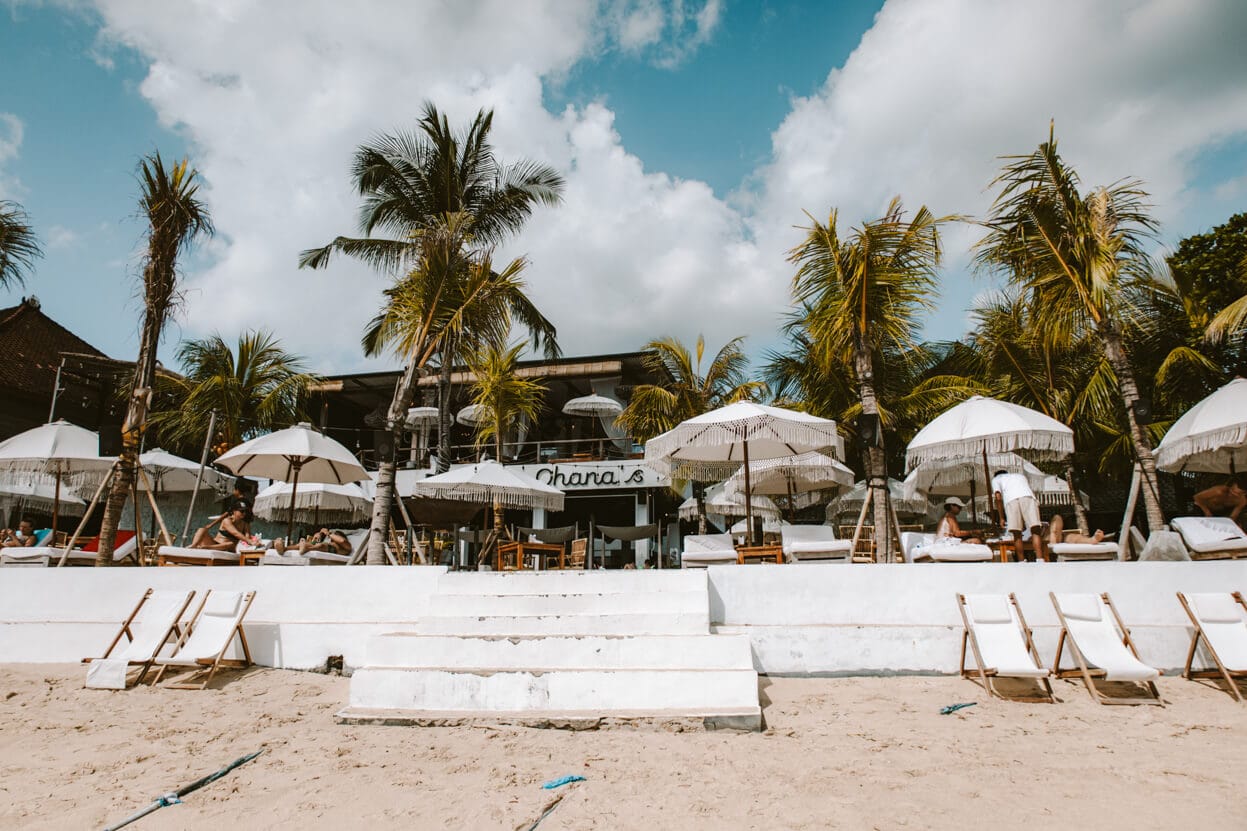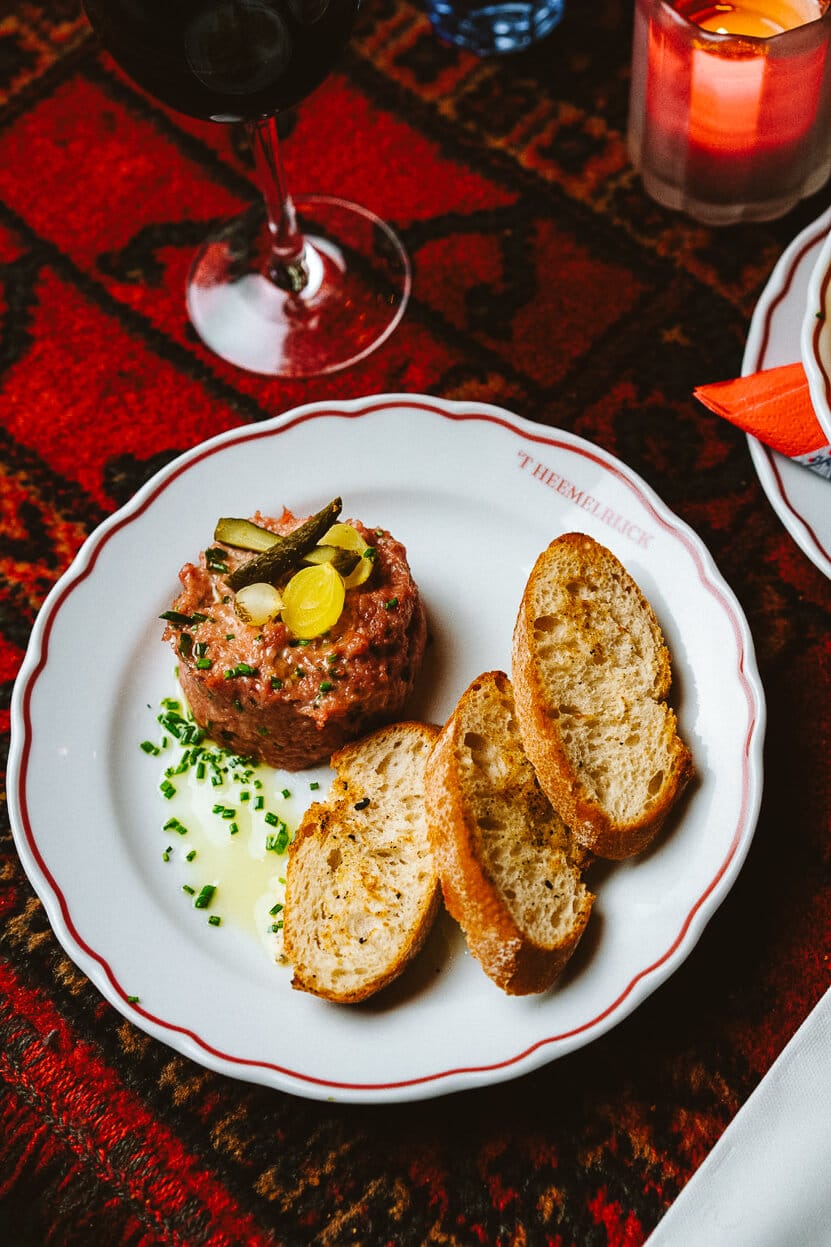Embark on a captivating journey through the vibrant world of samba dance in Brazil. This iconic dance form has captured the hearts of people worldwide, weaving together a rich tapestry of cultural heritage, rhythmic beats, and a celebration of life. Explore the origins and evolution of samba, its deep roots in the African diaspora, and the way it has become an integral part of Brazilian identity. Immerse yourself in the sights, sounds, and movements that make samba dance in Brazil a truly unforgettable experience.
- Samba: The Heartbeat of Brazilian Culture
- Samba Dance in Brazil: A Vibrant Tapestry
- The Rhythm of Samba: Exploring the Musical Beats
- Samba Dance Moves: Mastering the Steps
- Samba Dancing History: A Journey Through Time
- Brazilian Samba Dance: Regional Variations
- Samba Dance in Brazil: A Celebration of Life
- Samba Music in Brazil: The Soul of the Nation
- Samba Carnival in Rio: A Spectacle Like No Other
- Samba Dance Attire: Embracing Vibrant Colors
- Samba Dance Lessons: Unleash Your Inner Rhythm
- The Origins of Samba Dance: Tracing the Roots
- Samba Dance in Brazil: Experience the Rhythm!
-
FAQ
- What is the history and origins of samba dance in Brazil?
- How has samba dance influenced Brazilian culture and identity?
- What are the different regional variations of samba dance in Brazil?
- What are the key elements of samba music and its role in Brazilian culture?
- What is the significance of the Samba Carnival in Rio de Janeiro?
- How can one experience samba dance in Brazil and learn the dance moves?
- What is the significance of samba dance attire in Brazilian culture?
Key Takeaways
- Discover the origins and evolution of samba dance in Brazil, tracing its roots back to the African diaspora.
- Explore the deep cultural significance of samba music and its role in shaping the identity of the Brazilian nation.
- Immerse yourself in the rhythmic beats and vibrant movements of samba dancing, a true celebration of life.
- Witness the grandeur of the samba carnival in Rio de Janeiro, a spectacle like no other.
- Uncover the regional variations and unique styles of Brazilian samba dance across different parts of the country.
Samba: The Heartbeat of Brazilian Culture
Samba, the iconic dance that has captivated the world, has deep roots in the African diaspora of Brazil. This rhythmic art form emerged as a synthesis of diverse musical traditions brought by enslaved Africans, blending indigenous and European influences to become a quintessential part of Brazilian cultural identity. Samba dance origins can be traced back centuries, showcasing the profound impact of the African diaspora on the development of this beloved dance.
Origins and Evolution of Samba
The origins of samba dance culture can be found in the late 19th and early 20th centuries, when various African-derived musical genres coalesced in the densely populated urban centers of Brazil. Drawing inspiration from the rhythms and movements of the African diaspora, samba evolved, incorporating elements from indigenous Brazilian styles and European influences to create a unique and vibrant art form.
The Influence of African Diaspora
The African diaspora played a pivotal role in shaping the development of samba. Enslaved Africans brought with them a rich tapestry of musical traditions, which were later adapted and blended with local Brazilian styles. This synthesis gave birth to the rhythmic and percussive foundation that defines the samba, creating a profound connection between the dance and the cultural heritage of the African diaspora in Brazil.
“Samba is the heartbeat of Brazilian culture, a rhythmic embodiment of the country’s rich African heritage and its vibrant, diverse identity.”
Samba Dance in Brazil: A Vibrant Tapestry
The brazilian samba dance is a captivating and diverse art form that has evolved across the vast expanse of Brazil. From the rhythmic movements of the Bahian samba de roda to the energetic samba no pé of Rio de Janeiro, each regional interpretation of samba dance in brazil reflects the unique cultural heritage and traditions of its local communities.
The Bahian samba de roda, for instance, is characterized by its intricate footwork and fluid, body-centered movements, often performed in a circular formation. In contrast, the samba no pé of Rio de Janeiro is renowned for its dynamic, high-energy steps and lively interactions between dancers.
| Region | Samba Dance Style | Key Characteristics |
|---|---|---|
| Bahia | Samba de Roda | Intricate footwork, fluid body movements, circular formation |
| Rio de Janeiro | Samba no Pé | Dynamic, high-energy steps, lively interactions between dancers |
These regional variations of brazilian samba dance are a testament to the rich cultural tapestry that defines the essence of this captivating art form. Each interpretation reflects the unique histories, rhythms, and traditions of the communities that have nurtured and celebrated the samba over the centuries.
As the samba dance in brazil continues to evolve and captivate audiences around the world, it serves as a vibrant reminder of the deep-rooted connections between music, movement, and the enduring spirit of the Brazilian people.
The Rhythm of Samba: Exploring the Musical Beats
At the heart of the captivating samba dance lies a mesmerizing musical rhythm that drives the movements. Samba music in Brazil is a rich tapestry of influences, woven together to create a distinct and infectious beat that has captivated audiences around the world.
Instruments of the Samba Ensemble
The samba ensemble is a vibrant collection of instruments that work together to produce the rhythmic foundation. From the iconic pandeiro (hand drum) to the distinctive cuíca (friction drum), each instrument plays a vital role in shaping the rhythmic landscape of samba music.
- Pandeiro: The pandeiro is a circular hand drum that is essential to the samba sound, providing a steady rhythmic pulse.
- Surdo: The surdo is a large, deep-toned drum that sets the foundation for the samba beat, often playing the low-frequency pulse.
- Agogô: The agogô is a pair of bell-like instruments that add a high-pitched, jingling accent to the samba rhythm.
- Cuíca: The cuíca is a unique friction drum that produces a distinctive “wah-wah” sound, adding a playful and expressive element to the music.
The Role of Percussion in Samba Music
Percussion is the heartbeat of samba dance and music, with each instrument playing a crucial role in shaping the infectious rhythms. The interlocking patterns of the various percussion instruments create a complex and captivating rhythmic tapestry that inspires samba dancers to move to the beat.
“The rhythm of samba is not just a beat, but a way of life that pulses through the veins of Brazilian culture.”
The rhythmic mastery of samba music is a testament to the rich cultural heritage and the enduring influence of the African diaspora in Brazil. As dancers move to the infectious beats, they embody the spirit of samba, celebrating the rhythm that has become the heartbeat of the nation.
Samba Dance Moves: Mastering the Steps
Samba dance is renowned for its fluid, rhythmic movements and intricate footwork. Unleash your inner rhythm and explore the captivating world of samba dance with our guide to the essential samba dance moves. From the classic samba basic to more advanced techniques like the samba no pé and the ginga, discover the foundation of this vibrant Brazilian dance form.
Essential Footwork Techniques
Samba dance is all about the footwork. Mastering the essential samba dance steps is the key to unlocking the true essence of this captivating art form. Let’s dive into the fundamental footwork techniques that will have you gliding across the dance floor in no time:
- The Samba Basic: This is the foundation of samba dancing, featuring a characteristic back-and-forth stepping pattern that sets the rhythm.
- Samba No Pé: Also known as the “samba on the spot,” this move involves quick, rhythmic steps in place, showcasing the dancer’s agility and control.
- The Ginga: The iconic samba move, the ginga, is a smooth, swaying motion that connects the various steps and adds a graceful, undulating flow to the dance.
- Samba Walks: Gliding, swaying steps that allow dancers to move across the floor while maintaining the samba’s signature bounce and rhythm.
Mastering these essential samba dance moves will set the foundation for exploring the more advanced techniques and truly immersing yourself in the vibrant, pulsating energy of Brazilian samba. Embrace the rhythm, let your hips sway, and unleash your inner samba dancer!

“Samba is not just a dance, it’s a way of life. Each step, each sway, each beat, is a celebration of the human spirit.”
| Samba Dance Move | Description | Difficulty Level |
|---|---|---|
| Samba Basic | The foundational back-and-forth stepping pattern | Beginner |
| Samba No Pé | Quick, rhythmic steps in place | Intermediate |
| The Ginga | Smooth, swaying motion that connects the steps | Intermediate |
| Samba Walks | Gliding, swaying steps that move across the floor | Intermediate |
Dive into the vibrant world of samba dance moves and let the rhythm take over. Whether you’re a beginner or a seasoned dancer, mastering these essential footwork techniques will unlock the true essence of this captivating Brazilian art form.
Samba Dancing History: A Journey Through Time
The history of samba dancing in Brazil is a captivating tale of cultural evolution and resilience. Originating from the marginalized communities of Rio de Janeiro, this vibrant dance form has risen to become a beloved national symbol, reflecting the rich tapestry of Brazilian identity.
The roots of samba dancing can be traced back to the late 19th century, when enslaved Africans and their descendants began to gather in the city’s hillside neighborhoods, known as “favelas.” These communities, often overlooked by the societal elite, became the cradle of samba, as the rhythmic beats and soulful movements served as a form of cultural expression and community bonding.
Over the decades, samba dancing has undergone a remarkable transformation, adapting to the changing social and political landscapes of Brazil. From the emergence of samba schools in the 1920s to the incorporation of diverse musical influences, the dance form has continued to evolve, while maintaining its core essence as a celebration of Brazilian identity.
“Samba is not just a dance, it’s a way of life. It’s a reflection of the vibrant, joyful spirit that runs through the veins of the Brazilian people.”
Today, samba dancing has become an integral part of Brazil’s cultural heritage, celebrated with fervor during the annual Carnival festivities and cherished by Brazilians and visitors alike. The journey of this captivating dance form is a testament to the resilience and creativity of the Brazilian people, who have transformed a marginalized expression into a global symbol of unity and joy.
Brazilian Samba Dance: Regional Variations
Across the diverse regions of Brazil, the vibrant brazilian samba dance has evolved into distinct styles, each showcasing unique flair and characteristics. From the lively samba de roda of Bahia to the dynamic samba enredo of the Carnival parades in Rio de Janeiro, the rich tapestry of Brazilian samba dance is a testament to the country’s cultural diversity.
In the northeastern state of Bahia, the samba de roda tradition thrives, with dancers moving in a circular formation and celebrating the rhythmic interplay between music, movement, and community. This style is deeply rooted in the African diaspora, incorporating elements of Yoruba and Angolan cultural influences.
| Regional Samba Dance Styles | Distinguishing Characteristics |
|---|---|
| Samba de Roda (Bahia) | Circular dance formation, African diaspora influences |
| Samba Enredo (Rio de Janeiro) | Highly choreographed, feature in Carnival parades |
| Samba Pagode (São Paulo) | Intimate, house party-style samba, relaxed atmosphere |
In the bustling city of Rio de Janeiro, the samba enredo style dominates the Carnival scene, with highly choreographed and visually stunning performances by the city’s samba schools. These meticulously crafted routines showcase the athletic prowess and rhythmic mastery of the dancers, captivating audiences from around the world.
Exploring the regional variations of brazilian samba dance is a journey through the rich cultural tapestry of Brazil, offering a glimpse into the diverse expressions of this vibrant art form.
Samba Dance in Brazil: A Celebration of Life
The samba dance is not merely a cultural phenomenon in Brazil, but a profound celebration of life itself. At the heart of samba dance culture lies an intrinsic connection to the rhythms and energy that permeate the very fabric of Brazilian society. This captivating dance form has evolved to become a vessel for self-expression, community bonding, and the affirmation of cultural identity.
The Essence of Samba Dance Culture
Samba dance is deeply woven into the everyday lives of Brazilians, transcending the boundaries of performance and becoming a way of life. The infectious beats and fluid movements of samba dance are a testament to the resilience and joy of the Brazilian people, who have weathered historical challenges with an unwavering spirit. Through the samba, Brazilians find a means to connect with their heritage, to revel in the present moment, and to embrace the vibrancy that defines their culture.
The samba dance is more than just a series of steps – it is a samba dance culture that celebrates the essence of human existence. Whether it’s the rhythmic percussion, the swaying hips, or the contagious energy that emanates from the dancers, the samba invites all who experience it to join in a collective expression of life’s joyous celebration.
“Samba is not just a dance, it’s a way of life. It’s the heartbeat of Brazil, pulsing with the rhythm of joy, resilience, and the unbreakable spirit of the Brazilian people.”
As you immerse yourself in the samba dance culture of Brazil, you’ll find that the dance becomes a reflection of the nation’s vibrant and diverse tapestry, where tradition, creativity, and a zest for living converge to create a truly unforgettable experience.
Samba Music in Brazil: The Soul of the Nation
Samba music in Brazil is the lifeblood that infuses the nation’s cultural identity. This vibrant, rhythmic genre has its roots in the favelas of Rio de Janeiro, where it emerged as a reflection of the resilience and spirit of the Brazilian people. From these humble beginnings, samba has evolved into a diverse and multifaceted musical form, with regional variations that showcase the country’s rich cultural tapestry.
At the heart of samba music is the irresistible beat, a pulsating rhythm that seems to echo the very heartbeat of Brazil. The syncopated patterns, punctuated by the shimmering sounds of the samba percussion, create a captivating sonic landscape that invites listeners to move their bodies and feel the energy of the music.
But samba is more than just a musical style; it is a cultural expression that reflects the emotions, aspirations, and resilience of the Brazilian people. The lyrics of samba songs often delve into themes of love, loss, and the struggle for social justice, providing a glimpse into the lived experiences of the nation’s diverse communities.
“Samba is the soundtrack of Brazil, a tapestry of rhythms and melodies that weave the story of our nation.”
As the samba music in brazil continues to evolve and adapt to new influences, it remains a vital part of the country’s cultural identity. From the vibrant Carnival celebrations in Rio to the intimate samba clubs scattered across the country, this music serves as a unifying force, connecting Brazilians from all walks of life and celebrating the resilience and spirit that define the nation.
Samba Carnival in Rio: A Spectacle Like No Other
The annual Samba Carnival in Rio de Janeiro is the epitome of Brazil’s vibrant cultural heritage. This grand celebration is a dazzling showcase of the country’s passion for samba dance and music, drawing visitors from around the world to witness the captivating parade. Behind the mesmerizing floats, elaborate costumes, and pulsating rhythms lies a meticulously orchestrated event that requires extensive preparation and intricate logistics.
Behind the Scenes of the Samba Parade
The Samba Carnival in Rio is more than just a single-day event; it is the culmination of months of dedicated work by various samba schools, each vying to create the most awe-inspiring performance. From designing intricate costumes to constructing towering floats, the attention to detail is truly remarkable. Hundreds of dancers and musicians come together to rehearse their choreography and perfect their samba rhythms, all in pursuit of the coveted title of the best samba school.
The organization behind the Samba Carnival is a well-oiled machine, with teams of logisticians, security personnel, and technical crews working tirelessly to ensure the event’s seamless execution. The coordination of transportation, crowd control, and stage management is a true testament to the passion and dedication of the Brazilian people.
| Key Facts About the Samba Carnival in Rio | Details |
|---|---|
| Attendance | Over 2 million spectators attend the Samba Carnival in Rio each year. |
| Duration | The Samba Carnival in Rio typically lasts for 4-5 days, with the main parade taking place over two nights. |
| Participating Samba Schools | Approximately 70 samba schools compete in the annual Carnival parade. |
| Budget | The Samba Carnival in Rio has a staggering budget, with some samba schools investing millions of dollars in their parade productions. |
The Samba Carnival in Rio is a true spectacle that captivates the hearts and minds of all who witness it. From the breathtaking performances to the meticulous behind-the-scenes operations, this event stands as a testament to the enduring spirit of Brazilian culture and the power of samba to unite a nation.
Samba Dance Attire: Embracing Vibrant Colors
In the vibrant world of samba dance in Brazil, the costumes worn by the dancers are just as captivating as the rhythmic movements. From the flamboyant feathered headdresses to the sequined, body-hugging outfits, the samba dance attire has become an integral part of the cultural expression and spectacle of this iconic Brazilian dance form.
Samba dancers are known for their bold, colorful costumes that accentuate the dynamic nature of their performance. The feathered headdresses, often towering high above the dancers’ heads, are a hallmark of samba attire, adding a touch of elegance and grandeur to the overall ensemble.
- Sequined bodysuits and dresses, adorned with intricate patterns and designs, hug the dancers’ curves, allowing for seamless movement and a dazzling visual display.
- Vibrant hues of red, yellow, blue, and green are commonly used, reflecting the vibrant and festive nature of samba culture.
- Elaborate accessories, such as beaded necklaces, bracelets, and earrings, further enhance the overall look, creating a cohesive and eye-catching appearance.
The samba dance attire is not just about fashion; it is a vital component of the cultural expression and spectacle that surrounds this iconic Brazilian dance form. The costumes have the power to captivate audiences, transporting them to the heart of Brazil’s vibrant samba celebrations.
“The samba dance attire is not just about fashion; it is a vital component of the cultural expression and spectacle that surrounds this iconic Brazilian dance form.”
As the dancers move to the infectious rhythms of the samba, their costumes come alive, accentuating the energy and passion of the performance. The samba dance attire has become a symbol of Brazil’s rich cultural heritage, a dazzling representation of the nation’s love for music, dance, and celebration.
Samba Dance Lessons: Unleash Your Inner Rhythm
For those eager to experience the captivating rhythm and energy of samba dance, samba dance lessons are the perfect gateway. Brazil, the birthplace of this vibrant art form, is home to a wealth of exceptional samba schools that can guide you on an unforgettable journey through the steps and movements of this iconic dance.
Finding the Right Samba School
When it comes to samba dance lessons, the key is to find a school that can provide you with experienced instructors and a welcoming, immersive environment. The team at Travel Hub has curated a list of the best samba schools in Brazil, ensuring that you can easily identify the perfect fit for your samba dance learning experience.
- Experienced instructors who can teach you the fundamentals of samba dance, from the basic footwork to the more intricate moves
- A curriculum that allows you to gradually build your skills and confidence in samba dance
- A welcoming atmosphere that fosters a sense of community and cultural immersion
- Opportunities to participate in samba performances and events, further enhancing your learning experience
By engaging in samba dance lessons, you’ll not only learn the captivating steps but also delve into the rich cultural heritage of Brazil. Embrace the vibrant rhythm, unleash your inner dancer, and let the samba take you on a truly unforgettable journey.
“Samba is not just a dance, it’s a way of life. Let the music flow through you and let your body move in sync with the rhythm – that’s the true essence of samba.”
The Origins of Samba Dance: Tracing the Roots
To truly appreciate the captivating essence of samba dance, it’s crucial to delve into its historical and cultural origins. This iconic Brazilian dance form has been shaped by the diverse influences of the African diaspora, reflecting the country’s unique identity and rich heritage.
The roots of samba dance can be traced back to the traditional dances and rhythms brought to Brazil by enslaved Africans during the colonial era. These vibrant movements and infectious beats were a means of preserving cultural identity and expressing the resilience of the African spirit in the face of oppression.
As samba dance evolved over time, it became intricately woven into the fabric of Brazilian society, absorbing elements from various regional dance styles and musical traditions. This melting pot of influences gave birth to the distinct flavor and energy that characterizes samba today.
From the lively roda de samba (samba circle) gatherings in the favelas (urban slums) to the grand Carnival celebrations, samba dance has become a symbol of Brazilian pride and a celebration of the country’s rich cultural heritage. Its rhythmic patterns and captivating movements continue to captivate audiences worldwide, leaving an indelible mark on the global dance landscape.
“Samba dance is not just a dance, it’s a way of life. It’s a celebration of the human spirit, a testament to the resilience and creativity of the Brazilian people.”

Samba Dance in Brazil: Experience the Rhythm!
Immerse yourself in the captivating world of samba dance in Brazil, where the rhythmic beats and vibrant movements captivate the senses. This iconic art form, deeply rooted in the country’s cultural heritage, invites you to fully engage with the energy and spirit of Brazilian dance. Whether you witness a live samba performance, participate in a carnival parade, or embark on a journey to learn the steps, the experience of samba dance in Brazil is truly a once-in-a-lifetime opportunity.
Embrace the rhythm and feel the pulse of the samba as you watch the dancers effortlessly weave through the streets, their bodies moving in perfect sync with the pulsating beats. Witness the intricate footwork, the graceful twirls, and the infectious joy that radiates from every step, and let the samba dance transport you to the heart of Brazilian culture. Immerse yourself in the vibrant hues, the dazzling costumes, and the electrifying atmosphere that define the Brazilian samba dance experience.
Beyond the captivating performances, the opportunity to learn and participate in samba dance classes offers a deeper connection to this art form. Uncover the origins and evolution of samba, explore the intricate rhythms and musical elements, and master the iconic footwork and body movements that have made samba an integral part of Brazil’s cultural identity. Embark on a journey of self-expression and cultural immersion, and let the samba dance become a gateway to understanding the soul of Brazil.
FAQ
What is the history and origins of samba dance in Brazil?
The roots of samba dance can be traced back to the African diaspora in Brazil, where it emerged as a synthesis of diverse musical traditions brought by enslaved Africans. Over time, samba has evolved, blending indigenous and European influences to become a quintessential part of Brazilian cultural identity.
How has samba dance influenced Brazilian culture and identity?
Samba dance is more than just a dance form; it is a celebration of life, a testament to the resilience and joy of the Brazilian people. Samba dance is intertwined with the everyday lives of Brazilians, transcending the realm of performance and becoming a way of life that reflects the country’s emotions, aspirations, and cultural diversity.
What are the different regional variations of samba dance in Brazil?
Across the vast and diverse landscape of Brazil, samba dance has developed distinct regional variations, each with its unique flair and characteristics. From the lively samba de roda of Bahia to the dynamic samba enredo of the Carnival parades in Rio de Janeiro, the rich tapestry of Brazilian samba dance reflects the country’s cultural diversity.
What are the key elements of samba music and its role in Brazilian culture?
Samba music in Brazil is the lifeblood that infuses the nation’s cultural identity. At the heart of samba dance lies a captivating musical rhythm, driven by the iconic instruments of the samba ensemble, such as the pandeiro and cuíca. Samba music has become the soundtrack of Brazil, reflecting the country’s emotions, aspirations, and resilience.
What is the significance of the Samba Carnival in Rio de Janeiro?
The annual Carnival celebration in Rio de Janeiro is the ultimate showcase of samba dance and music. It is a grand spectacle where elaborate costumes, vibrant floats, and pulsating rhythms come together, showcasing the captivating world of the samba parade and the intricate logistics that make it an awe-inspiring event.
How can one experience samba dance in Brazil and learn the dance moves?
If you’re eager to experience the joy and rhythm of samba dance, consider taking samba dance lessons at the best samba schools in Brazil. These institutions can guide you through the steps and help you unleash your inner rhythm, teaching you the fundamentals of samba dance, from the basic footwork to the more intricate moves.
What is the significance of samba dance attire in Brazilian culture?
Samba dance in Brazil is not just about the rhythmic movements; it is also about the vibrant, flamboyant costumes that adorn the dancers. The samba dance attire has become an integral part of the cultural expression and spectacle of this iconic Brazilian dance form, reflecting the country’s vibrant colors and joyful spirit.










